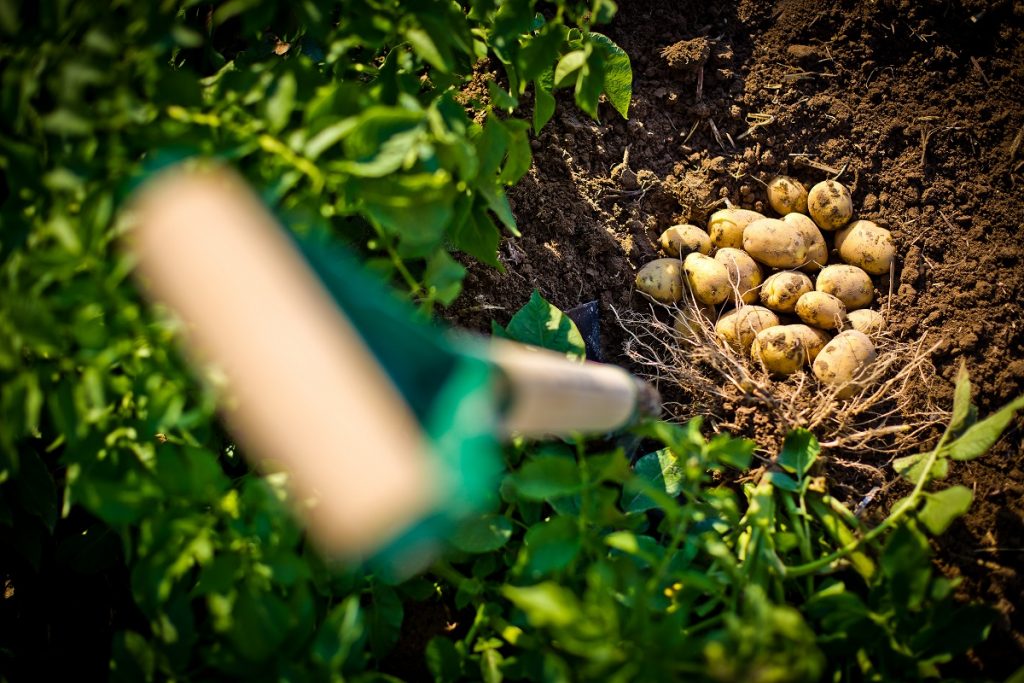
Potato Seed Production
Potato Seed Production
Potato is the fourth most staple food crop. It has the highest productivity among all staple food crops. In case of high hills i.e., above 2000 masl its significance highly increases as commercial cultivation of other food crops is rarely possible. Further, the quality seed is one of the most important concerns for commercial cultivation of potato. There are two major potato seed production practices;
- True Potato Seed (TPS)
TPS is hybridized potato seed produced by growing parental lines in rows, emasculating female parental lines and pollinating them with male parental lines. Till date white cultivars have been produced successfully with the TPS technique.
TPS is mostly used for following advantages;
- This technique is used for disease free seed production. It is the technique for virus free seed production.
- The Cost of tubers used in conventional methods of planting is very high whereas the production of tuberlets in nurseries for planting next year is relatively very low.
- Higher cost required for storage of huge bulk of conventionally used tubers is reduced as tuberlets (being very small in size) require very little space for storage. This also reduces cost in transplantation.
- The viral infiltration in the seed tuber is also less.
- The cost of tuber treating chemicals is also reduced because of the relatively lesser volume of tuberlets.
- In rural nations like Nepal, TPS is often the best option for transporting seeds to rural areas.
- By this method, the disease-free potato seed can be produced and prevention of diseases to new areas can be checked.
- In TPS technique, the normal seed rate (2.5 t/ha) of potato is drastically reduced to only about 200g of TPS, thereby saving huge quantities of food material for table purposes. Potato crop can be raised from TPS using seedling transplants or through seedling-tubers produced in preceding crop season.
Process of TPS production
- The process is initiated with planting male and female parental lines in alternate rows.
- The female parental line needs to be male sterile or emasculation is necessary immediately after flower opening.
- The emasculated flowers from female plants are pollinated with pollen from male flowers.
- The ripe berries are harvested and pulping is done to separate seeds obtained.
- These seeds are planted in seed beds for the next cropping season. The spacing needs to be 25cm*25cm for direct tuber production and 25cm*10cm for transplanting seedlings to main plots for tuber production.
- These tubers from the first generation can be used for potato seed production up to four generations in high hills and up to third in lowlands.
- Pre-Basic Seed (PBS)
Pre-Basic seeds is the mostly used technique for commercial potato seed production through laboratory techniques. These seed potatoes are disease free potato mini tubers produced by transplanting pathogen free in vitro potato plantlets under protected condition in aphid-proof glasshouse and/or screen house.
Process of PBS production
- PBS seed production is initiated with the mother plant.
- Meristem cell culture is taken from the mother plant in properly sterilized laboratory conditions in MS media.
- The plant produced from meristem culture is further multiplied in similar sterilized conditions.
- The plants produced in the lab are transferred to screen house and planted in specified soil composition.
- The mini tubers produced from these laboratory prepared plants are called pre basic seeds.
- The 75 kg of PBS produced from the first generation gives 750 kg in the second generation and 7500kg in the third generation. These first, second and third generation tubers can be used as seed potatoes which give 75000kg production in the fourth year which are used as edible potatoes.
